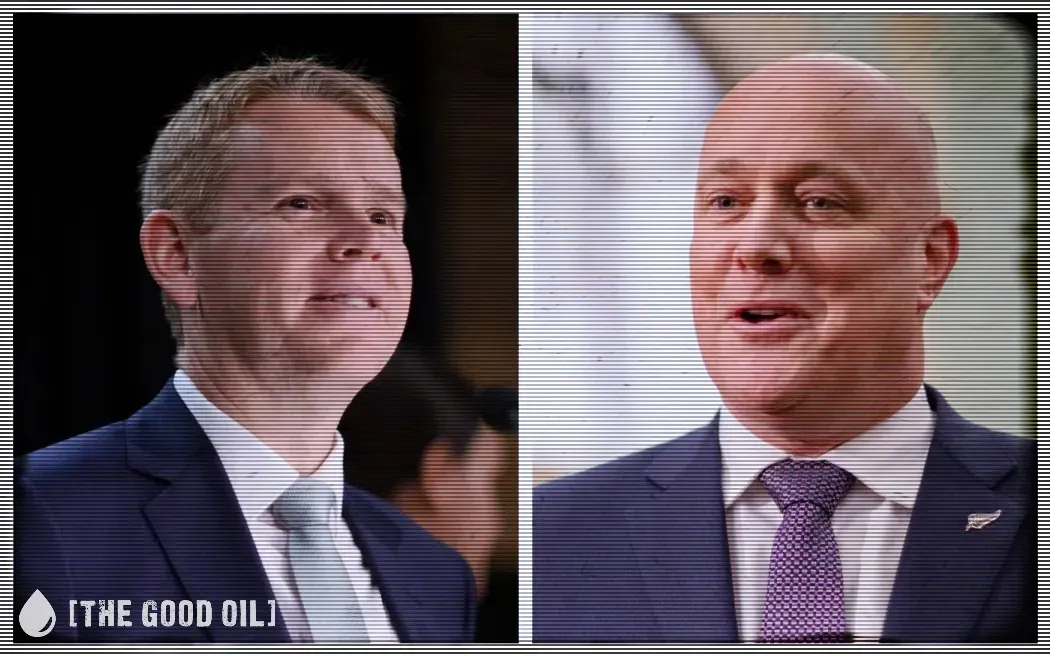We sometimes tend to be very critical of the present coalition Government. Our criticism is often to do with their lack of action, their apparent reluctance to deal with issues pertaining to race or their inability to agree on certain issues. A fair bit of this criticism is based on what we hear, particularly on the nightly television news. This, as we know, is hopelessly biased because most of the journalists hate this government with an obvious passion and are working overtime to ensure it fails in its aims.
The result of this is that we don’t get to hear or see many of the good things the government is engaged in. For that information you have to go to YouTube and watch the clips offered by various parties. NZ First is very good at providing these, ACT would be next and I would encourage National to be more active in this regard. These videos give you news of the positive things the government is involved in that the mainstream media will not report on because they show the government in a good light. These activities are the last thing the media wants you to be aware of.
An example is the help the government is offering the provinces in the form of partnering with local businesses in ventures that will be of benefit to the economy and help turnaround its current abysmal state. The government is prepared to use its balance sheet to assist. They want to hear ideas where they might be able to assist in the form of co-investment, debt or equity or monies from the $1.2 billion fund. Iwi leaders and Civic leaders in the provinces are being asked to join together to identify projects that might fit these criteria.
My first reaction on hearing this was to think that here is a positive and beneficial approach to encouraging people from both sides of the racial divide to come together for the benefit of the country as a whole. How different from He Puapua and Three Waters, which were the exact opposite. I would say this is what the Treaty of Waitangi intended: working in harmony for the benefit of all. This approach is, of course, a complete anathema to the Māori Party, Willie Jackson, John Tamihere, Nanaia Mahuta and the other Māori elites. It is a concept that brings no benefits to them personally.
The meetings the government is holding are in the provinces across the country. Attending these meetings are ministers from all three parties. No matter what political trivia you might hear on the six o’clock news, these parties are all in sync when it comes to recognising the importance of the provinces and the part they can play in the economic success that this government wants for the country. This approach helps the economic resilience of the provinces and creates jobs. The government is also promising financial assistance for extreme weather events.
The videos on YouTube put up by NZ First featured the Bay of Plenty region. Meetings were held in Kawerau and Ōpōtiki, two of the most disadvantaged areas in the region. In Ōpōtiki they were talking about the co-development of, in Winston’s words, “the biggest mussel farm in not just New Zealand, not just Australasia, but the world”, to which the government is contributing a further 16 million dollars. Applause followed the announcement. This is the sort of thing the regions want to hear.
Both Winston and Shane Jones spoke directly to Māori who were there to get involved and submit ideas. Winston spoke of the jobs created and told the kaumātua and huia present, “Your young people need to be off the dole. Our job is to find the work but we’ve got to get them work ready to take on the task and to go forward because, in every sense, we want to be the country we once were where everyone can get a job, can buy an affordable house, gets access to the health system and gets decent wages. This project will help us get there.”
It’s this type of rhetoric Māori, and indeed the country, should be hearing and not the decolonisation nonsense and the victimhood negativity spouted by the Māori Party and others of their ilk who have ulterior motives designed to improve their lives and no one else’s. The Māori in attendance at these meetings want hope for a better future and that can only come with the policies this government is promoting. Improvements in the provinces through industrial development, better infrastructure, job creation, which, in turn, lead to a better economy.
It’s just a pity the media choose to paint a very different picture of what this government is about. Better outcomes for all. The REAL news is not to be found at six o’clock on One or Three but elsewhere in places such as YouTube. I suggest you check it out. It’s a worthwhile exercise.









